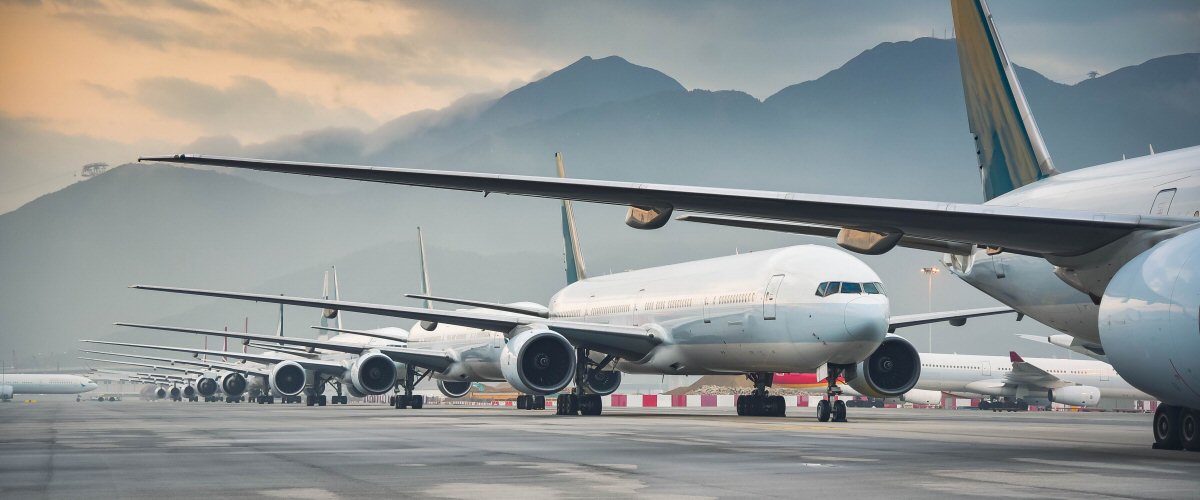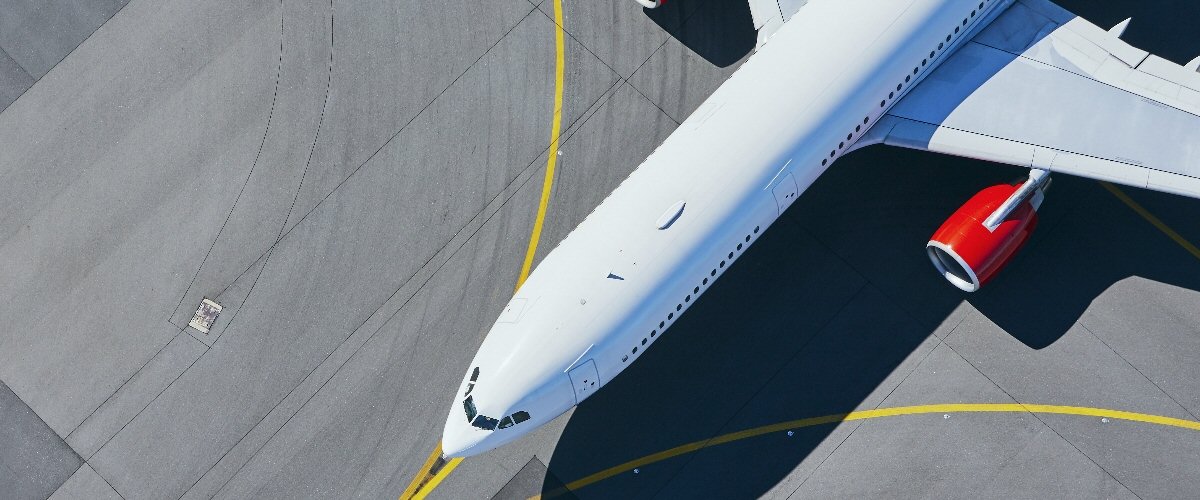Date: 05/04/2024 (Edition 6) Download PDF
.png)
It can only mean one thing and that is the preliminary first quarter deliveries from the OEMs! Now to be clear, Q1 is nearly always the worst as all OEMs and suppliers try to up the ante for the final quarter, leaving them short of inventory for the new year. Whilst we still await “official” confirmation, it is no secret that we can efficiently track aircraft pretty well nowadays so first flights and deliveries are easier to determine, provided they deliver them rather than store them at the plant!
Looking at March 2024 initially, data from IBA Insight would suggest that Airbus have delivered 62 aircraft built on the A220/A320/A330 and A350 platforms. Boeing have delivered just 29. For Airbus, that is a similar figure to last year, whereas for Boeing it remains well below par, indicative of the problems they are going through. It is also likely to be indicative of the dwindling number of aircraft remaining to deliver from the ones stockpiled during 2020/2021. Thankfully the Chinese operators have started to take them, but they require a lot of effort to get them out.
In terms of breakdown, Boeing is basically pushing out just 737s and 787s as part of that number, 24 ‘v’ 5 respectively. Airbus have delivered reasonably well across all programs with 50 A320 family, 4 A220s, 3 A330s and 5 A350s. Every quarter, Airbus have managed to deliver 145 units (the highest since 2019), against 83 for Boeing (back towards 2021 levels).
When looking at just the first quarter for the past six years, the chart would suggest a significant step back if we were to ignore the high number of reactivations that made up the figures for the past few years. Now that the production rate and line quality are under such scrutiny, we could estimate that forecast deliveries for FY24 will need a third trim.

Source: IBA Insight
Our forecast in early January was for 616 deliveries, a rise of over 16%. By the end of January, that was down to 556 (a rise of 5%) – whereas due to the unknown nature of regulatory interference, the final number may be pulled closer to last year’s number of 528. Conversely, I still feel Airbus need to strengthen its outlook from a conservative 800-order prediction. We had 828 in our January forecast, which I remain confident about.
Downstream, regardless of who is producing what, the combined impact of low deliveries and strengthening demand will mean that Lease Rates will continue to climb, more leases will be extended, and airlines will raise fares to account for the reduced capacity and higher leasing costs. For those airlines already on the bread line, we foresee a higher chance of renegotiations or failure.

Source: IBA Insight
Many airline markets seem to have three dominant competitors. In China you have the ‘Big Three’, whilst when referring to the US legacy carriers, most will think of United, Delta and American (although strictly speaking it also includes Alaska). Likewise in Europe, there are three large low-cost airlines and the last story I wrote compared three European full-service group results. However, with Turkish Airlines' latest net profit of US$5.8bn (net margin 28.7%), over double that of each of those European groups, do they now need to be part of the conversation?
The first debate is whether they are comparable. Whilst in geography Turkey straddles two regions, 87% of Turkish Airlines’ flights fall within Europe, which would suggest European identity. This is despite the airline having the largest international network in the world (129 countries and 342 airports to their latest factsheet). It should be said that because of the multiple national brands under each of the 3 classic groups, those are each less focused on a singular hub. However, in terms of long-haul, the smaller airlines in the group principally act as a feeder network for the main airline.
A key area where Turkish Airlines differs from the other three is that they are also a transit hub to Asia and beyond. This business model has been particularly fruitful since the closure of the Russian airspace to many Western nations. Turkey still have access and their Russian traffic is still over double the levels of 2019. At March’s Airlines For Europe conference, the major European airlines discussed whether levies needed to apply to Chinese airlines using Russian airspace to give them a competitive advantage. Therefore, Turkish Airlines should arguably be as much compared to the likes of Emirates and Qatar as Europeans. With March reporting year ends their results are not released yet. However, IBA forecast a net profit of US$5.4bn for Emirates and US$2.2bn for Qatar in 2023. Turkish Airlines' result does not look as much of an outlier when compared to the former.
There is also context that needs to be applied to the results. The net profit of US$5.8bn is significantly above the airline’s operating profit of $2.9bn (margin 13.7%). This is partly accounted for by investment and financial income, but mostly a US$3bn tax rebate for inflation adjustment. The results are therefore less dramatic, but still very strong, improving on great 2022 results. This is also still superior to the three other large European full-service carriers. The airline managed to up ASKs by 33.9% whilst fuel costs decreased by 3.6%. The airline likely benefited from its high-spec cabin IFE in a year where premium demand has been strong.
The elephant in the room for Turkish, however, is their country’s economy. The interest rate was recently raised to 50% amid stubborn inflation at 68.5%. The airline should be able to leverage its large brand to borrow internationally, but that also comes at a cost with a weakening currency. That weakening currency will also erode domestic purchasing power, meaning the airline will need to rely more than ever on transit passengers as opposed to their domestic consumers. They may also not always get favourable tax treatment in future years if the economy can’t support it. The airline will hope these issues at home clear up before their recent 220 Airbus aircraft order starts to get delivered!
General Electric (GE) Aerospace recently completed its separation from its parent company, with the parent splitting into three independent entities. The parent company faced financial turbulence due to ill-fated investments and fallout from the 2008 financial crisis, notably impacting its profitable arm, GE Capital. This led to weakened profits, a $100 billion debt burden, and an 80% decline in stock value, prompting the removal of two consecutive CEOs by GE's board. CEO Larry Culp, who took charge in 2018, has spearheaded a rigorous turnaround effort. With a more focused approach, the company is hoping to renew the investor’s trust. The optimistic reaction was already reflected in the company’s slight stock price bump on the day of the breakup.
GE Aerospace is emerging from the breakup as a legal successor of its parent company and with the support of a $3bn revolving credit five-year agreement. Several commitments have already been made regarding future expansion plans, with a notable example of this being the recent investment of $28.8 million in its manufacturing facility in Pune, India. This substantial investment underscores the company's commitment to the Asia-Pacific market, which has recently seen sizeable aircraft orders from the region’s biggest players.
With a diverse portfolio of engines, including the CFM Leap, GEnx, GE9x, and GE90, GE Aerospace remains a key player in both the widebody and narrowbody (through CFM) space. The increasing presence of General Electric Aerospace in India will likely present Air India with opportunities for faster and cheaper engine maintenance, with their significant order for B787 and B737 MAX aircraft.
Elsewhere on the PW1000G engine programme, settlements have been reached for Air Astana and Spirit Airlines with the latter agreeing to an amount between $150 million and $200 million. This is slightly less than the IBA estimate of $230 million. With no information implying any reduced downtime, this settlement may not be well received.
Our regular update looks at the key trends and market indicators using data and analytics provided by IBA Insight.





凭借由获奖 ISTAT 认证评估师组成的庞大团队以及 30 多年累积的专有数据,IBA 在全球估值市场上处于领先地位。我们为全球范围内的一系列资产类型提供独立、公正的价值意见和建议,包括飞机、发动机、直升机、货机/航空货运、降落机位和预备件等。IBA 始终致力于超越客户的期望,我们的客观意见为贷款、资产收回、商业开发和再营销提供了必要的安全保障。

IBA 与全球领先的飞机和发动机租赁公司精诚合作。我们的专业建议植根于深厚的行业知识,因此 IBA 可以在投资周期的各个阶段提供支持,让客户放心无忧。从估值、机队选择、投资组合开发,到租赁结束时的退租和再营销,我们将全程协助客户完成整个租赁期的所有风险评估和资产管理活动。

航空投资往往错综复杂,会涉及大量财务风险,因此,放任资产不去管理绝对是下下策。无论是首次投资的新手,还是市场上驾轻就熟的资深投资者,IBA 都能帮助您克服各种资产类型的复杂性,让您更好地了解各种投资机会。我们可以与您携手合作,支持您的投资组合开发、多元化发展并满足您的战略需求。

30 多年来,IBA 与全球和地区航空公司紧密合作,提供估值和咨询服务、航空数据情报以及飞机和发动机的退租支持。我们在遍布世界各地的各种航空项目上与客户展开协作,满足他们的额外资源需求,随时随地提供所需的项目管理支持。

我们掌握着丰富资源并善于出谋划策,可为客户提供诉讼支持和纠纷调解办法,并根据客户的法律策略量身定制周密的解决方案。正是由于 30 多年来专有航空数据的积累、定期参与战略并购,以及丰富的飞机管理专业知识,我们能够经常接触到各方之间的典型争端领域。IBA 通过直接或与客户自己的法律团队合作的方式,在各个方面为客户提供帮助,从飞机损坏或损失的保险相关理赔,到常常在退租时发生的租赁商与承租商的纠纷。